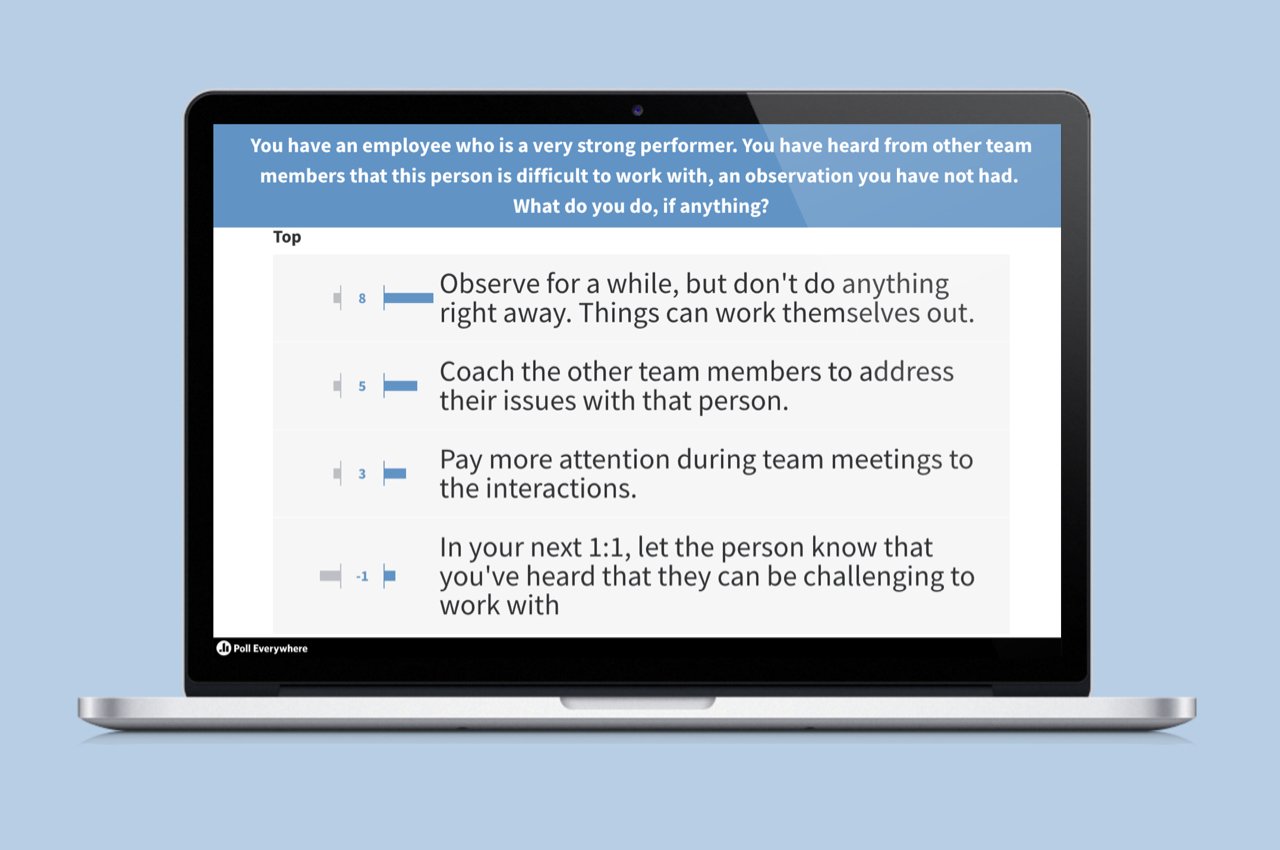Professional development that gets leaders thinking

“You’ve heard it before, but we will say it again: soft skills matter.” We couldn’t agree more with this quote from LinkedIn’s 2019 Workplace Learning Report.
At the same time, we know that soft skills are the ones leaders most often say are lacking in their organizations.
According to ATD’s report, Bridging the Skills Gap: Workforce Development and the Future of Work, the top missing skill set in 2018 was communication and interpersonal skills – with 66% of respondents reported a gap. Critical thinking and problem-solving skills came in second this year with 65% reporting it as a challenge and managerial and supervisory skills was third.
By contrast, only 28% of respondents noted a gap in technical skills.
The thing about soft skills is that it’s not just about learning the facts. It’s not just knowledge acquisition. Creativity, communication, persuasion, and collaboration are crafts to be cultivated. They are practices to be fostered.
And that is expensive.
Not every organization can invest in the kind of small group leadership training or formal mentorship programs that often succeed in enhancing this set of soft skills. Also, many organizations want to be able to scale these practices and competencies, not keep exclude them to a subset of promising professionals.
Creativity, communication, persuasion, and collaboration are crafts to be cultivated, not knowledge to be acquired.
Enter interactive instructor-led-training.
From the pedagogy research, we know that active learning – the process of actively engaging in problem solving – improves learning and enhances retention. From the study of adult learning, we know that real world context matters. Adults learn when it’s real. When there are stakes to engage in.
There are many ways to deliver on this, but here we’re going to talk about “Choose-your-own-adventure” polling. It encourages engaged problem solving, references real problems, and scales as an interaction method.
How it works
Here’s the basic overview…
You present a challenging situation to a group of learners. You ask an open ended question about how they’d resolve it. For example, “what would you do in this situation as the manager?” Each participant submits their response through a Poll Everywhere up-down-vote poll. After each attendee responds, they see a list of everyone else’s responses and can upvote their favorites. Finally, you invite open discussion amongst the participants around their responses.
It works because polling lowers the stakes of participation. Everyone, no matter how reserved, can participate.
At the same time, the ranked order of responses increases the stakes of that discussion that follows. You can see both the wisdom of the crowd (i.e., the top voted response) as well as the most unconventional wisdom (i.e., the response with the most disagreement.)
Participants know they are discussing something that everyone in that room decided matters.
That’s the basic outline, but the beauty of the COYA poll is that you can make it as rich and layered as the content and participants require. You can have multiple rounds of a scenario that unfolds. You can also scale it by forming small discussion groups that submit their responses as one.

Management training example scenarios
Training new managers and the next generation of leaders is a top priority for many learning organizations. Here are a few example scenarios to kick off a management training session:
You heard from another manager in your department that one of your employees has been complaining in the breakroom about your management style. What do you do first?
A direct report is performing well in her assigned role. She completes projects on time and at a fine quality. However, when you meet for your 1:1s, she never brings anything to discuss with you. She does what you have asked, but does not suggest ideas or identify opportunities even in her own workstreams. What would you do, if anything?
An employee has traditionally been a solid performer, but for the last three weeks has been underperforming, including missing deadlines and sharing work with errors. You’ve addressed each issue when it came up and in each case, there seemed to be a reasonable explanation. You find yourself worrying about the next piece of work you want to assign. What would you do, if anything?

Best practices when delivering CYOA training
Here are some pointers on running a successful CYOA training:
Choose a real life problem that has impacted your organization.
Better to select a problem from the past or from a different department or one you have known the organization has faced. This also serves to extend the institutional memory of your organization to others.
Keep to observable facts when describing the scenario.
Adding an opinion or interpretation can steer the conversation in a certain direction and undermine the problem solving aspect.
Choose a problem where there are trade-offs.
It can be tempting to be able to see to the end of the problem yourself. Don’t pick an easy problem.
Add details little by little.
This creates a sense of story and unveiling that is engaging. You can add details that are directly relevant and some that are just for richness.
Be flexible.
You may decide to engage in multiple rounds of a scenario that builds. In other words, you present a scenario, get responses, then present an additional set of details. In that case, you may need to adjust the new round’s prompt to fit the previous round’s responses. That’s okay. Your participants know it’s live and appreciate that what they have contributed matters.
Finally, have fun. CYOA training can be intimidating to facilitate, but it is also an opportunity for real learning and growth – for you and the participants.